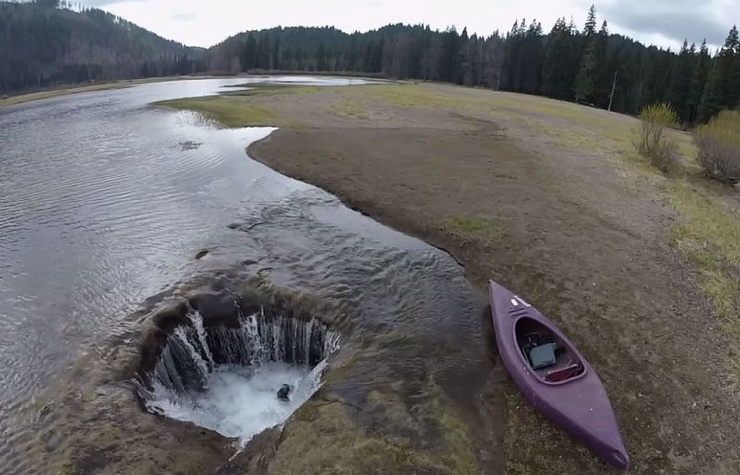Every summer, Oregon’s Lost Lake disappears down a couple of volcanic tunnels only to return in the fall, as a number of streams start flowing into what looks like a peaceful meadow.
Driving past Lost Lake in the late fall or in the winter, you may not pay much attention to the seemingly plain body of water, but making the same drive in late spring or in the summer, you’ll definitely do a double take as a peaceful meadow replaces the lake. This is the magic of Lost Lake, a special attraction located in Oregon’s Willamette National Forest, just off U.S. Highway 20. Starting in late autumn, a number of streams start flowing down from the surrounding mountains filling the meadow that soon becomes the bottom of the Lost Lake, and by mid-winter, the lake is at its fullest. The disappearing act begins in spring and is completed in the summer, as the contributing streams dry out, and all the water in the lake is drained via two holes that act like the drains of a bathtub.

Photo: Ryan Brennecke/The Bulletin
Interestingly, the two volcanic holes have been around for as long as anyone can remember. They drain the lake permanently, but during the snow melt, the volume of water that flows down into the meadow is so large that the 7-foot-wide holes can’t drain it all fast enough. By the end of winter, as the contributing streams decrease in volume, the Lost Lake begins its slow disappearing act.
Geologists say that the holes at the bottom of Lost Kale formed sometime around 12,000 years ago as the result of intense volcanic activity in the area. Such formations are Actually very common around the Cascades area of Oregon. Where the water goes is somewhat of a mystery, but experts believe it seeps through the porous rock and refills a large aquifer that supplies various springs in the area.
Lost Lake is a popular tourist destination during the summer, with thousands of people traveling here to see the mysterious drain holes. However, park authorities have been struggling to keep people from trying to plug them up, for some reason. Apparently, over the years they have been using large rocks, car engines, and other debris to plug the volcanic shafts, which, if successful, would be quite disastrous for the nearby area.
“If anyone was ever successful at plugging it, which we’re not sure they could do, it would just result in the lake flooding, and the road. It’s an important part of how the road was designed,” a spokesperson for the U.S. Forest Service told The Bulletin.






